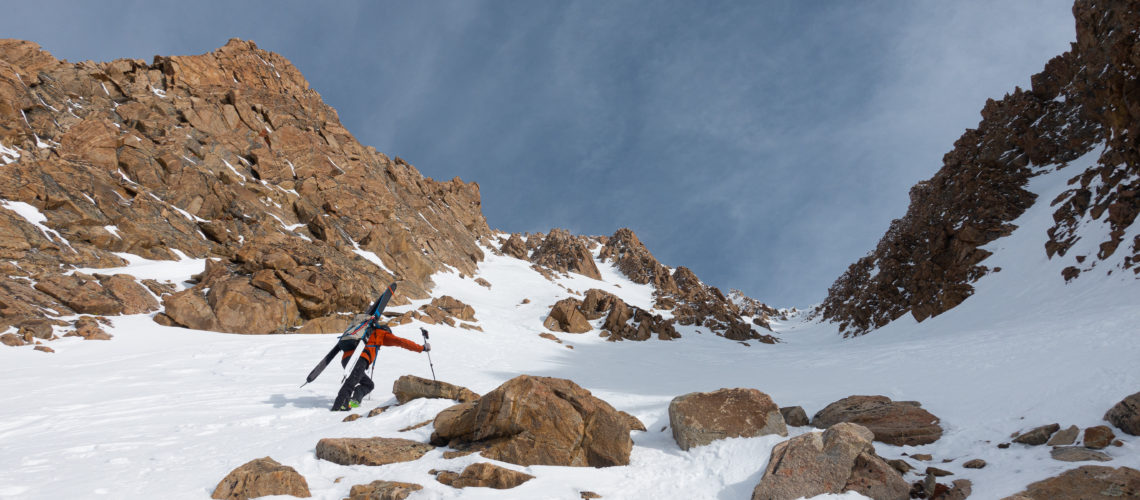
The very distant south face of Castle Peak. #26 of #50
(photo by Ben VandenBos of the Sawtooth Avalanche Center)
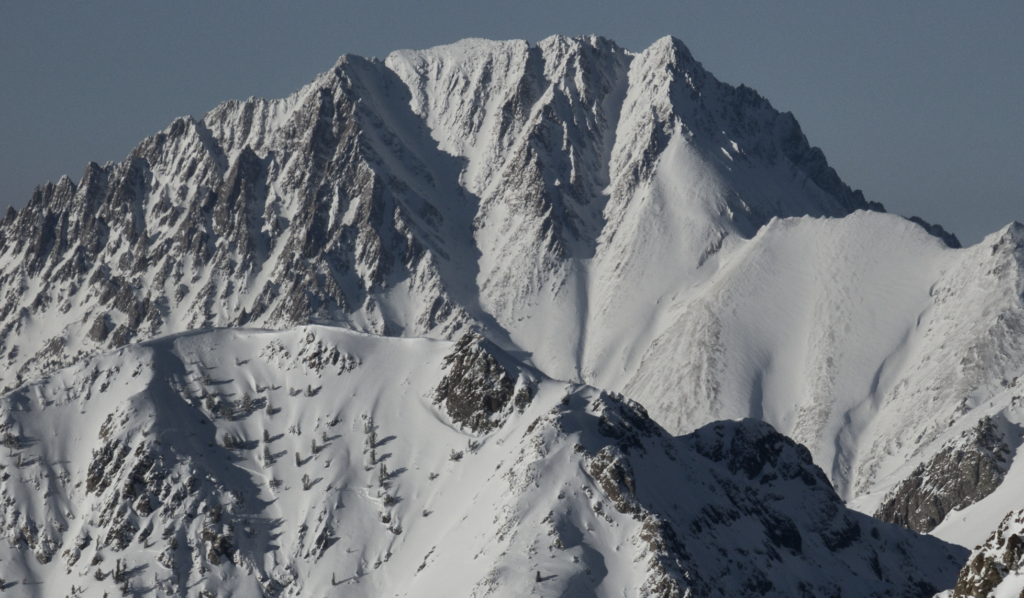
This wasn’t my first rodeo so to speak. I’d ridden and wrestled snow-machines deep into the Cloud River Range of Idaho in a previous attempt to climb and ski the massive south facing couloir on Castle Peak in 2018. Jason Dorais and I had camped out, hiked up to the ridge and were stopped in our tracks by a heavily wind loaded slope that we couldn’t safely manage descending. There weren’t any safe zones to ski-cut to and we didn’t have a rope, so we called it quits. We skied back down to camp and headed home. A bit of a drive and some effort, but that’s just what you do sometimes when trying to approach remote lines without much available beta.
(Really roughing it on the first attempt! Photo- Jason Dorais)

The plan of attack was pretty much the same this past season when Ben Peters and I returned for round two. We trailered snow-machines up from SLC, parked just off the highway in the wide beautiful valley that divides the rugged Sawtooth Range and the remote Cloud River Mountains.
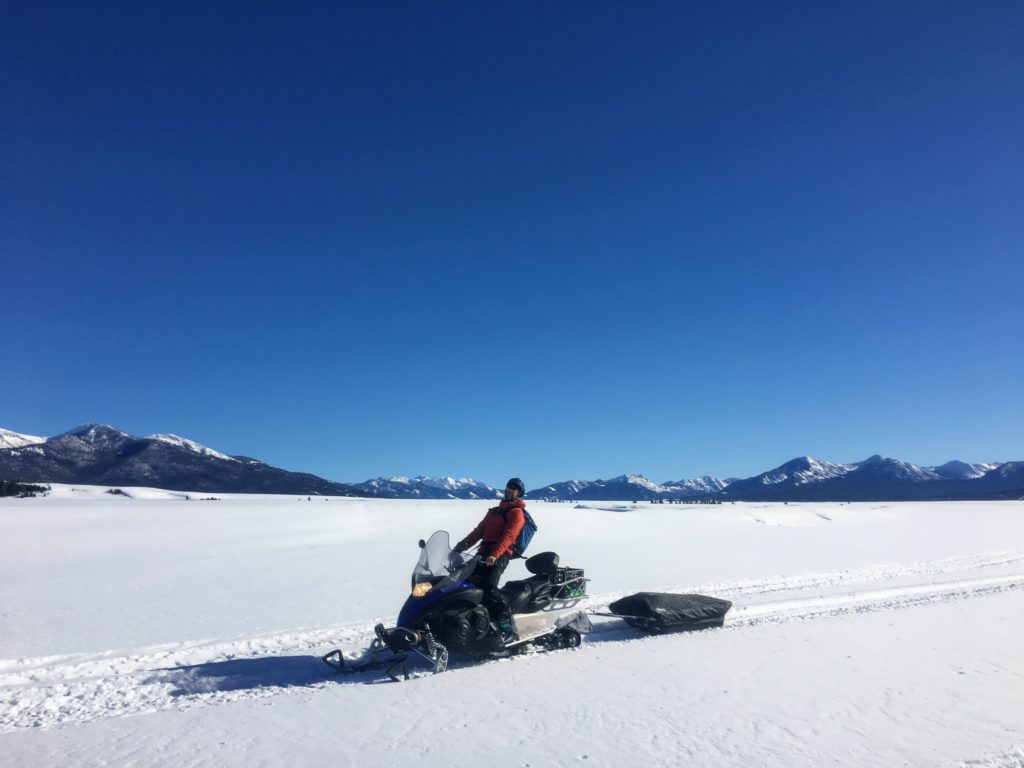
Snowmobiles feel like cheating, but with a ten mile approach to the wilderness boundary, I’m ok with cheating now and then. We blazed through the burnt forests and into the upper canyon where the trail narrows and follows some tight paths through pine forest and eventually opens up onto 24th of July Lake. The ride in went without a hitch which was a relief because that is not my standard snowmobile modus operandi, which usually involves much digging and cursing. We considered camping on the lake, but moved up onto the next knoll so we could enjoy the last bit of sun as it set.
Ben taking it all in.
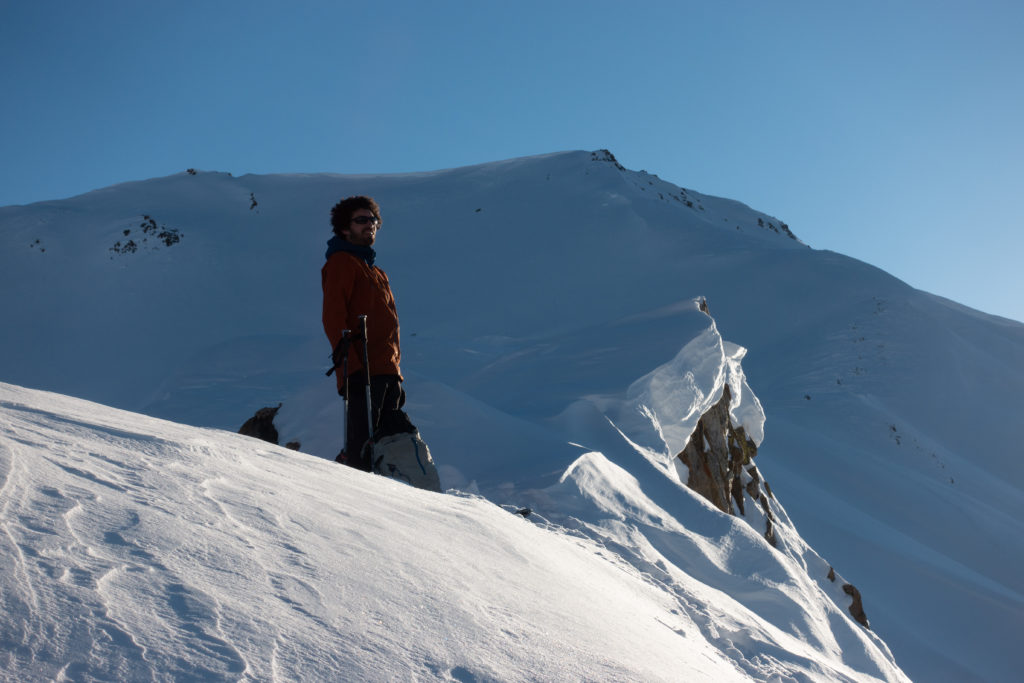
We got a quick sunset lap in to stretch the legs and get a feel for the snowpack. Ben stomping on it real hard to see if anything happens.
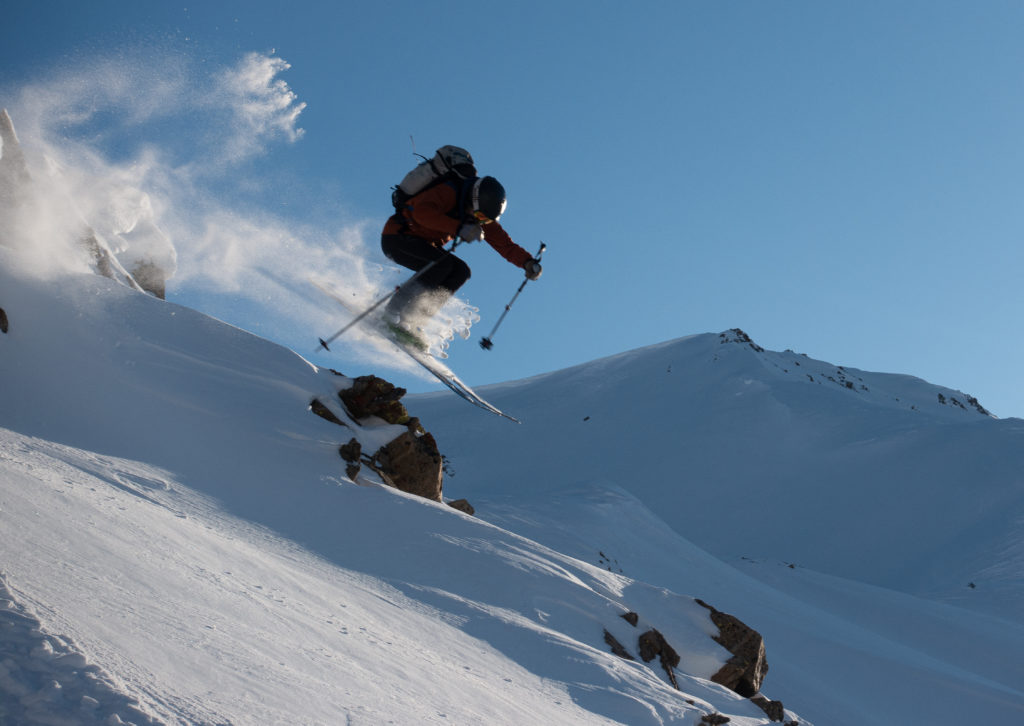
There are several lines in the 50 Classic Ski Descents of North America that have very little beta online and seem to have seen very few descents. Castle Peak is one of those lines, making it much more adventurous. What I found online was from Montana hard man, Brian Story who approached from the south much later in the spring. I hadn’t heard of anyone doing this approach from the west and at this time of year. But, it seemed like a good idea because the White Cloud Mountains don’t receive a ton of snow and they do get a lot of wind, so I was worried we’d find it melted out much later in the season if we waited. Approaching from the standard summer route, seemed to make sense on Google Earth and so far it was working out.
Plush camp
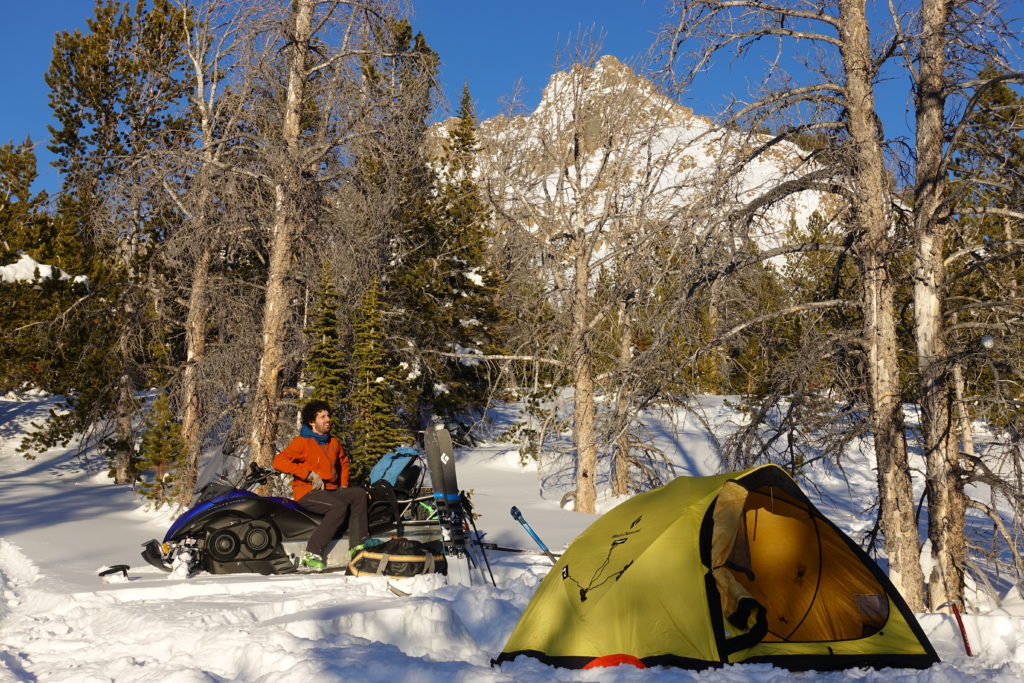
The beauty of snowmobile camping is that it’s basically like car camping, not really roughing it at all. We brought all the warm layers and a roomy tent, but for some reason we skimped on food and only brought freeze dried meals for dinner?! First mistake of the outing. We started out by sharing an appetizer of freeze dried chili, then beef n’mac followed up by lasagna, the problem being that these items differ in name, but are almost identical in substance, a red slurry once water has been added. We forced it down around the fire and went to bed.
What time to wake up? This can often require a complex combination of guesstimations. I’m bad at math, but here is the rough formula. You first have to guess what weather and snow conditions will be like and figure a best guess at how long it will take you to get to the summit= 4hrs. Then you estimate what time you’d like to be dropping in on the line=11a.m. (at the latest). Then you subtract the approach hours from the summit time=7a.m., then add time for gearing up=30mins, breakfast=0 (decided to skip it) and add a little buffer in= 30mins, because it’s better to be early and freeze your ass off on the summit than blow it and be skiing in suboptimal, or even dangerous conditions. Our final equation = 6a.m. wake-up.
We skied down from camp a few hundred feet to Washington Lake. Then we put skins on and broke trail up through crust and pow to the ridge. The sun was starting to peak out just in time to catch first light on the Sawtooth Range.
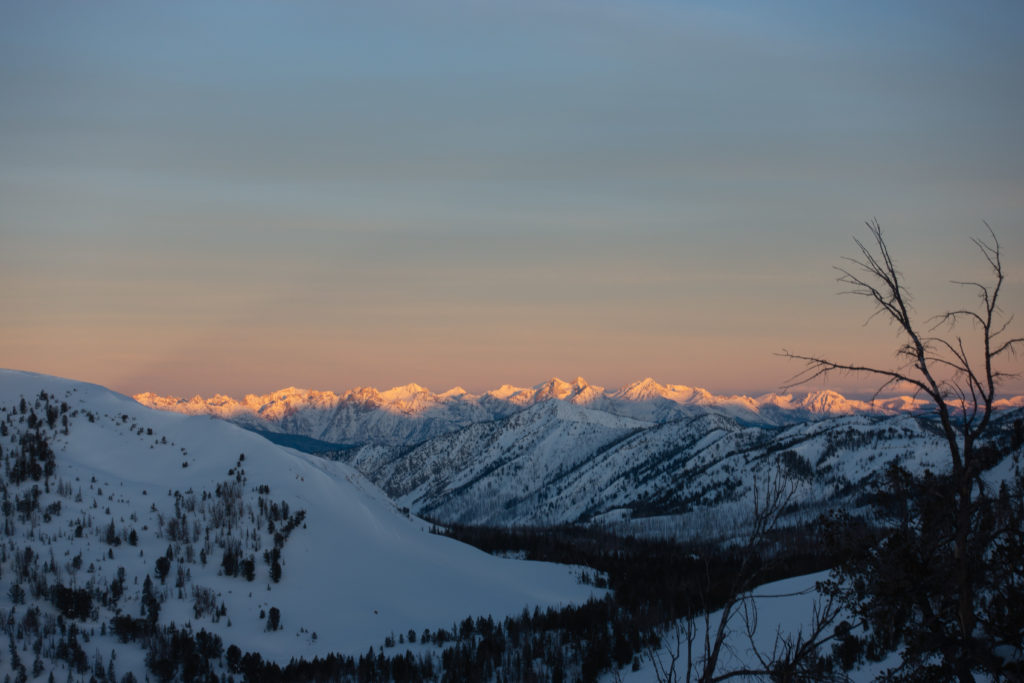
From here we stood face to face with the west side of Castle Peak. This aspect of the mountain is striated with several great looking couloirs, but these not the lines we had come for. The “classic” line is out of sight to the right of the photo.
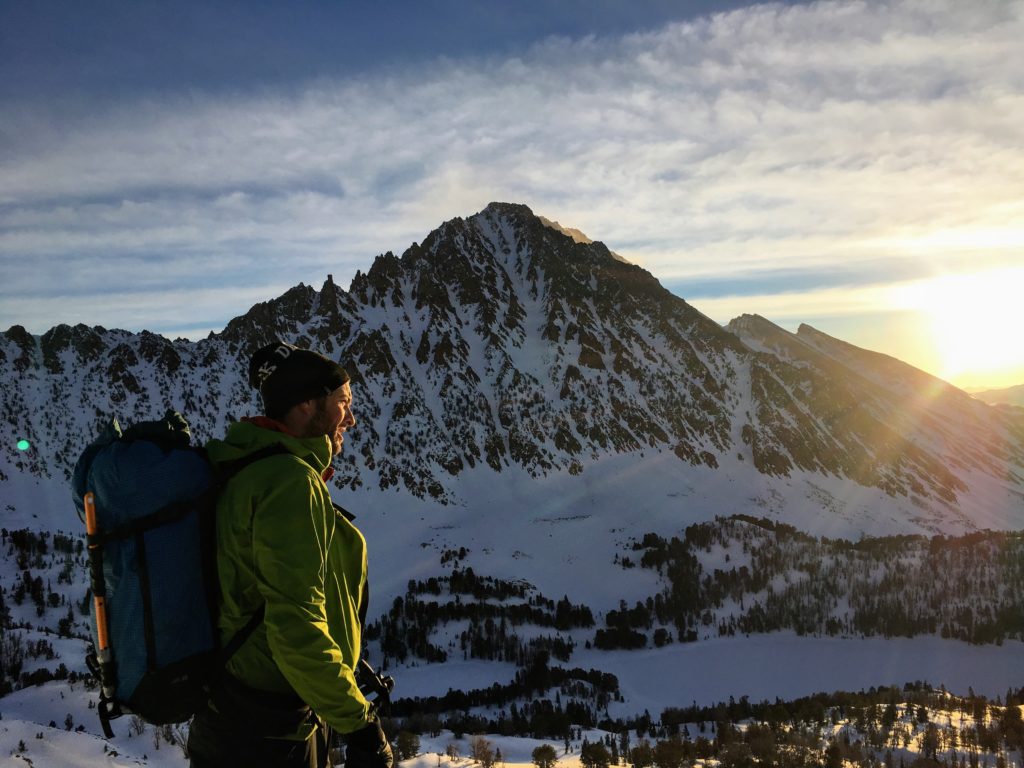
This is where Jason Dorais and I had turned around the year prior. Ben and I were prepared with a rope in case we needed to ski cut, but to our pleasant surprise the slope had avalanched quite significantly during what had been a massive deep slab cycle! No ski cut necessary. There was a foot or so of soft fresh snow on top of the bed-surface so we felt comfortable airing over the 5 foot cornice and descending.

Ben went first and enjoyed some nice powder turns mixed with some core shots. This descent put us into the upper Chamberlain basin. From here we skied down to lakes 8 or 9 I think they are unimaginatively named.
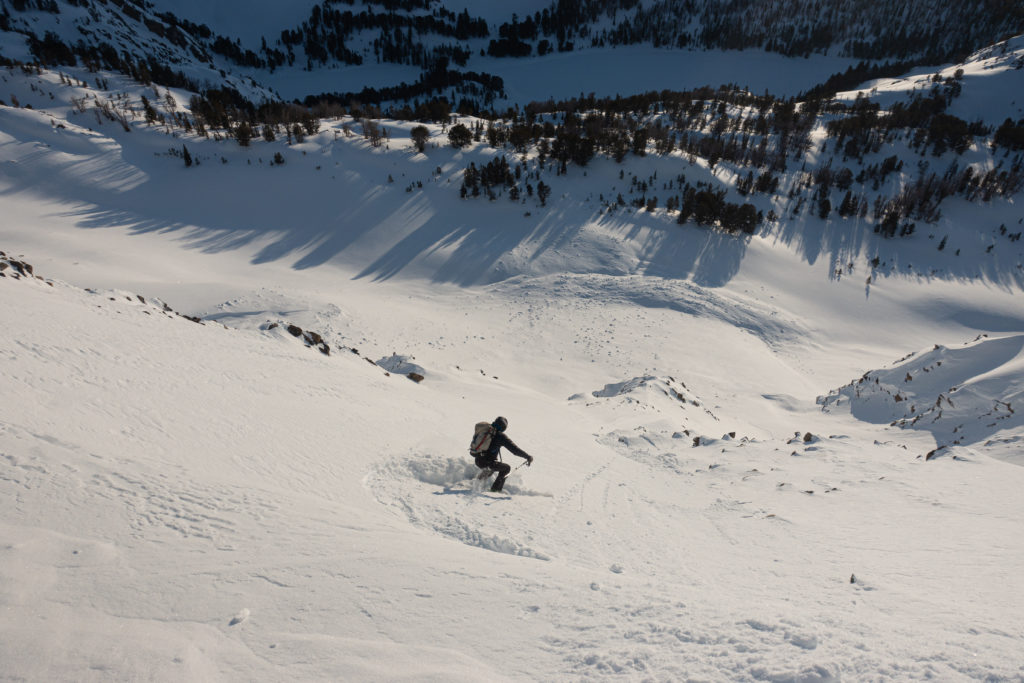
Looking back up at the crown and our turns.
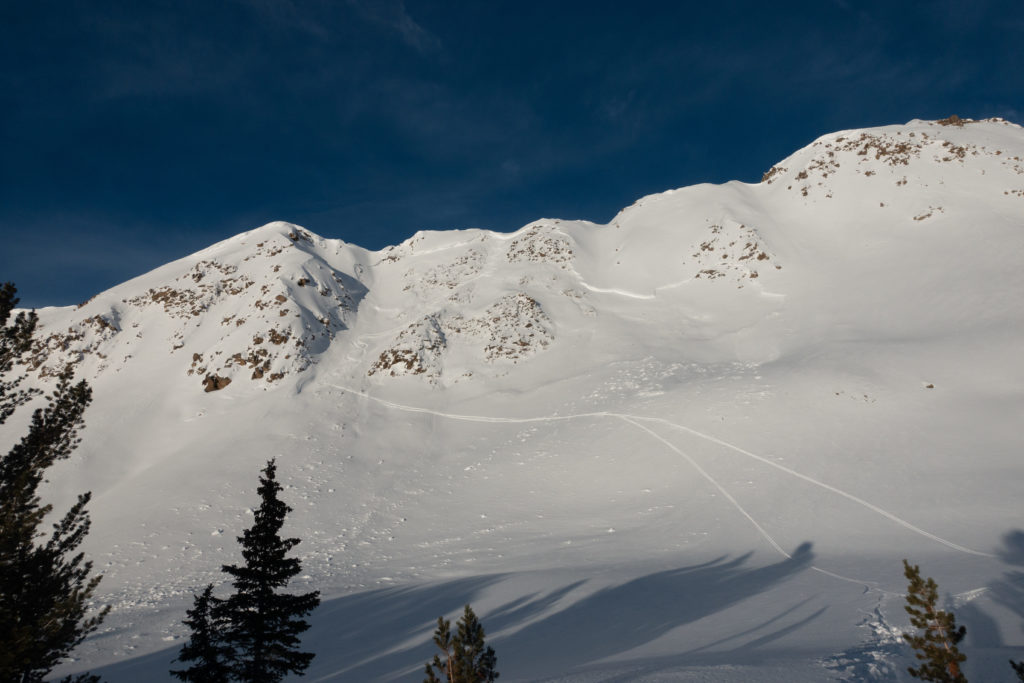
From there we climbed up a short bit and contoured then descended to the south and west. The snow was a mixed bag, none of which was amazing, but the remoteness and scenery made up for it.
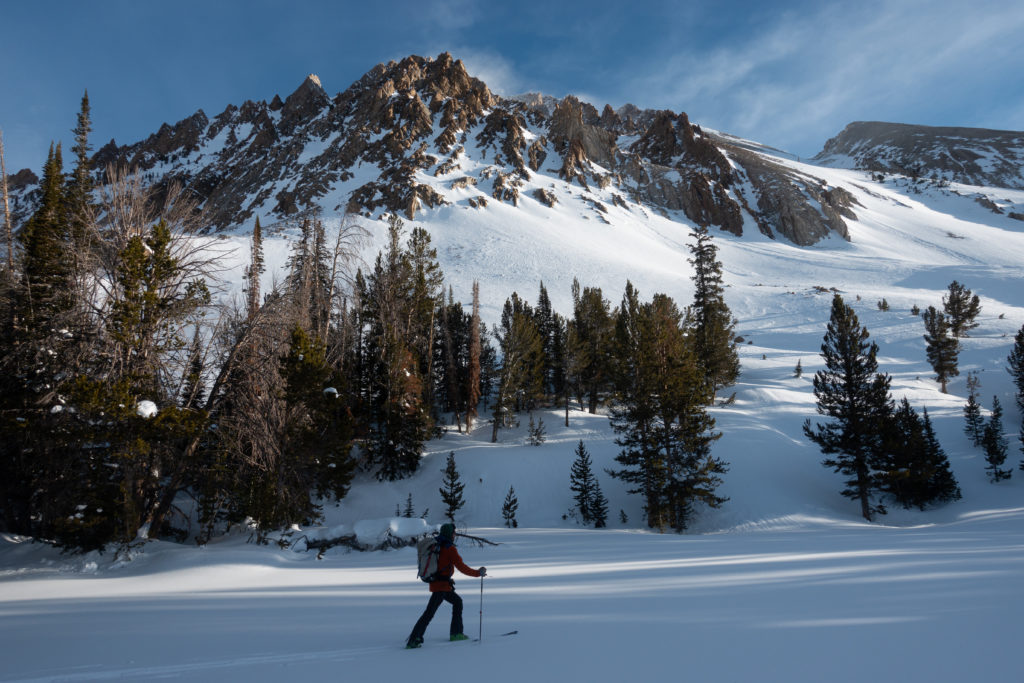
Finally at the base of the face we could look up and see what was in store. The south aspect is pretty impressive. To the viewers right is a nice long tight couloir with a halfpipe to finish in. To the left is a big face with a few chutes and open slopes that reached the ridge. The wind was blowing and loading and we opted for the couloir option since it seemed safer and more aesthetic as well.
We started skinning up on a horrific breakable crust. It was so bad that I was ready to turn around even though we’d come this far, I did not want to ski the line in conditions this poor. However, we knew that things usually change (even if for the worse sometimes) if you keep moving, so we kept moving.
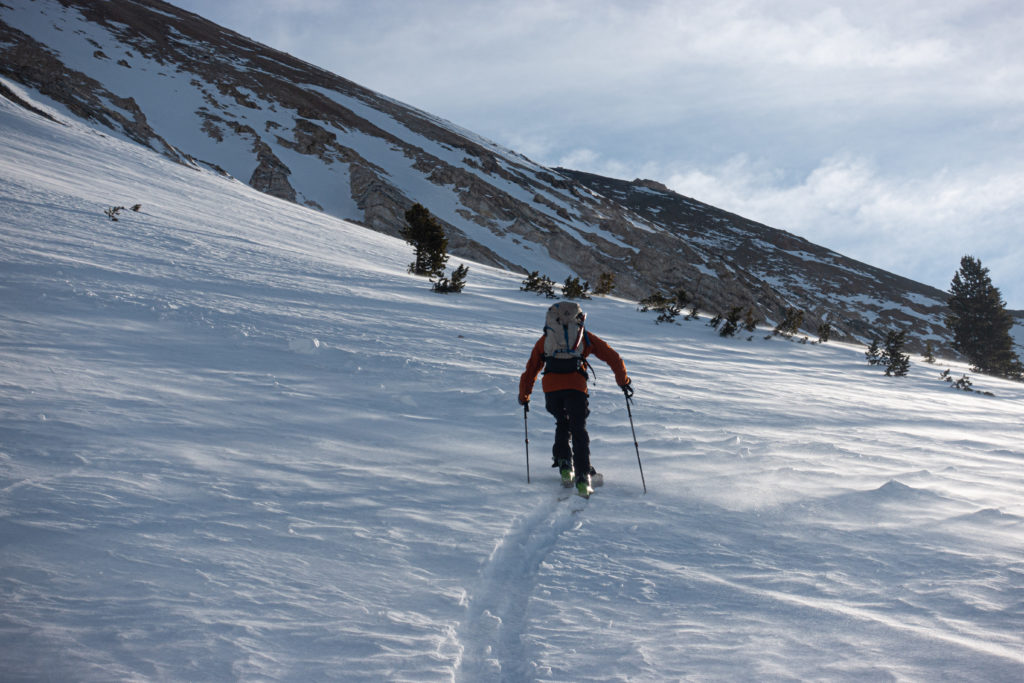
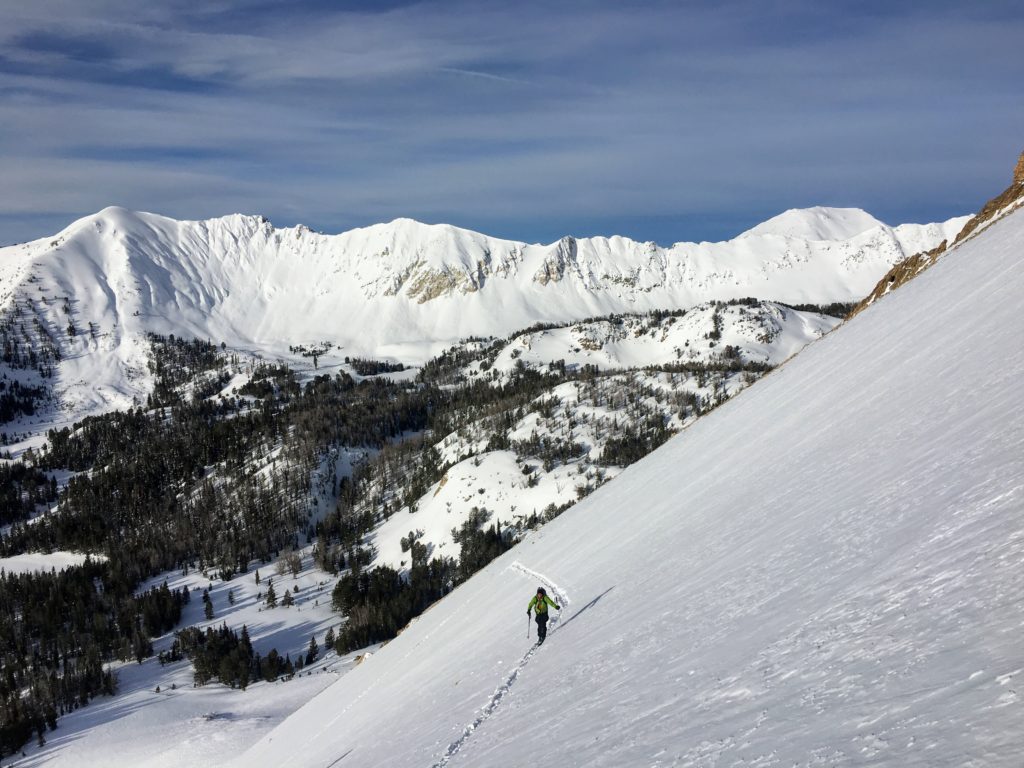

The snow soon consolidated, the crust went away and with Ben breaking trail we quickly punched our way up the couloir.
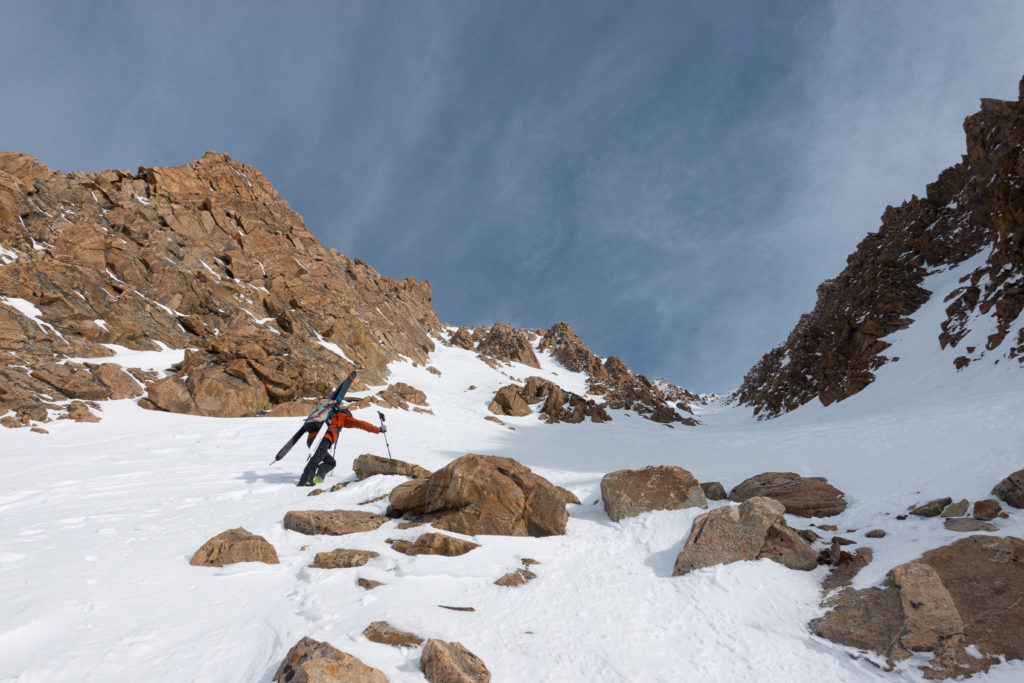
Lots of time to think on these climbs…….but it’s funny how I usually can’t remember those thoughts once I’m sitting here at the computer trying to recall them. Oh well.
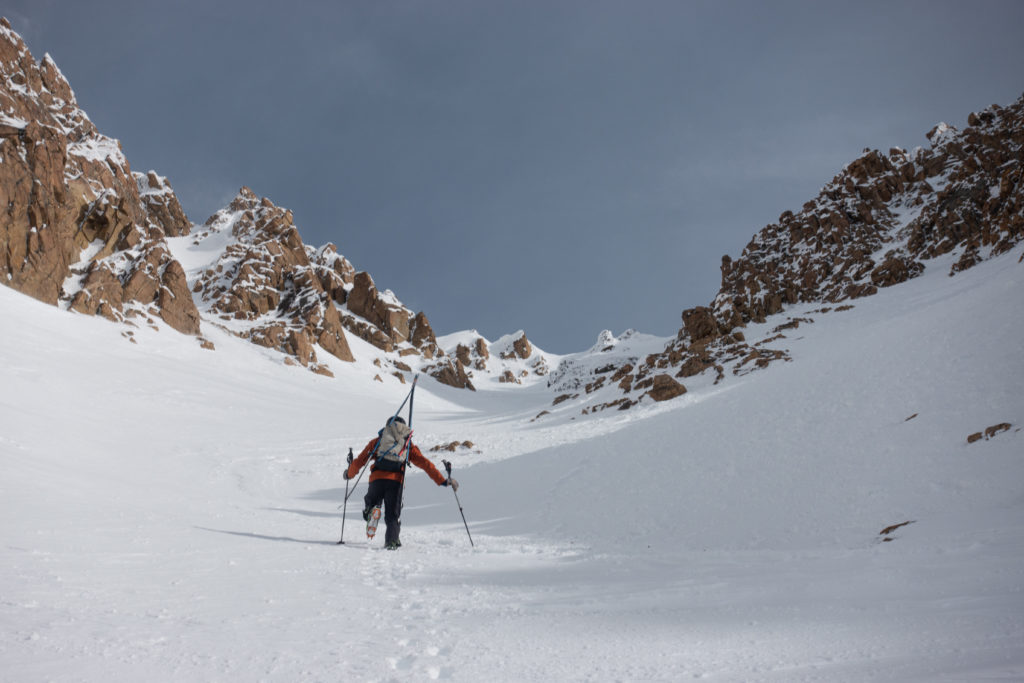
It was a cold and windy transition once we topped out. We didn’t mess around long, but Ben did climb around to see if we could gain the summit. It was a little too steep and rocky for that so we just skied back down.
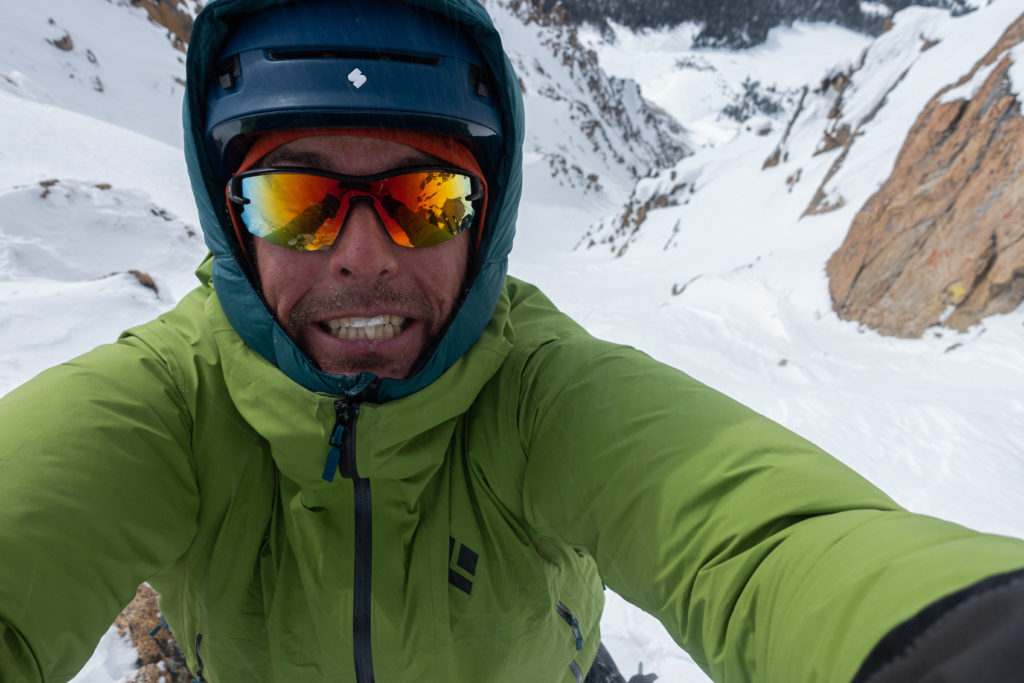
We broke with protocol and Ben let me go first even though he had put in the entire boot pack. It’s not like my scraping down the wind-buffed hard-pack really ruined anything for him.
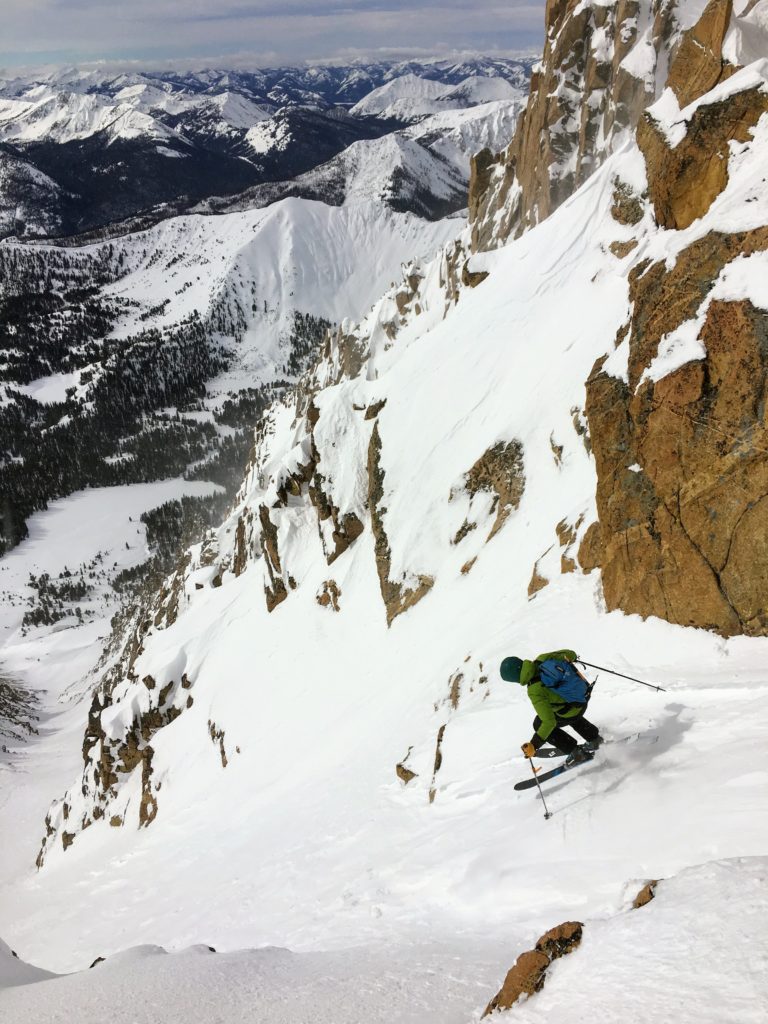
The very top was narrow and steep, but the snow held an edge well and the slope quickly mellowed out after fifty feet or so. And once in the gut of the line we were protected from the wind as we enjoyed firm sometimes choppy skiing. Ben strapped in and showed me how skiing shitty snow is done.
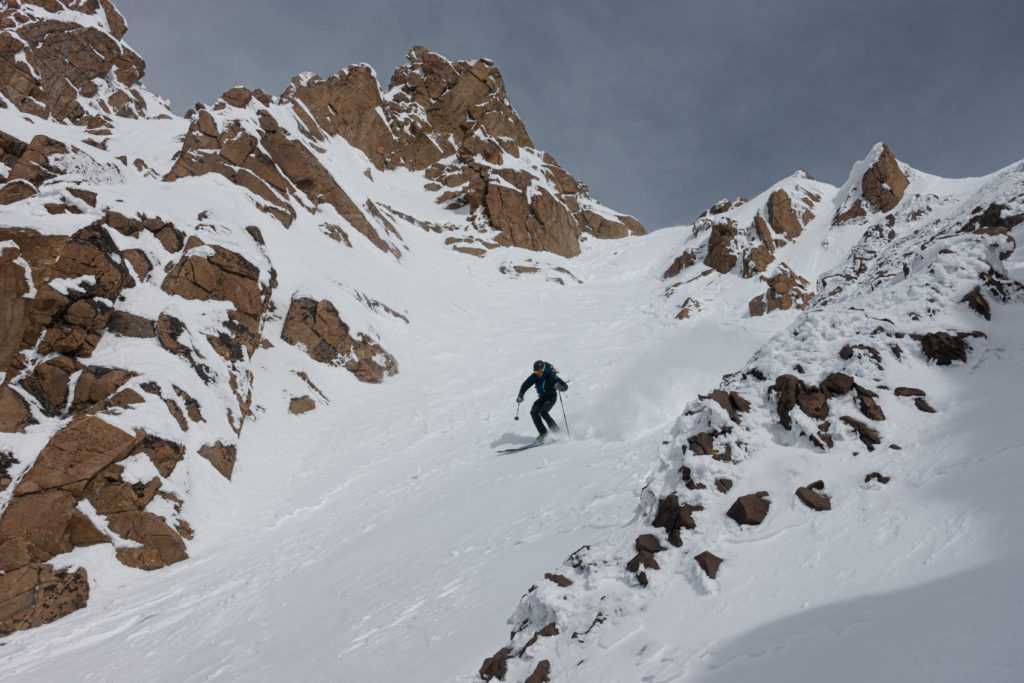
There’s a stupid saying going around in skiing-there’s no such thing as bad snow, only bad skiers. This is false, there is bad snow, which this was and also there are bad skiers and I felt like I was definitely one of them.
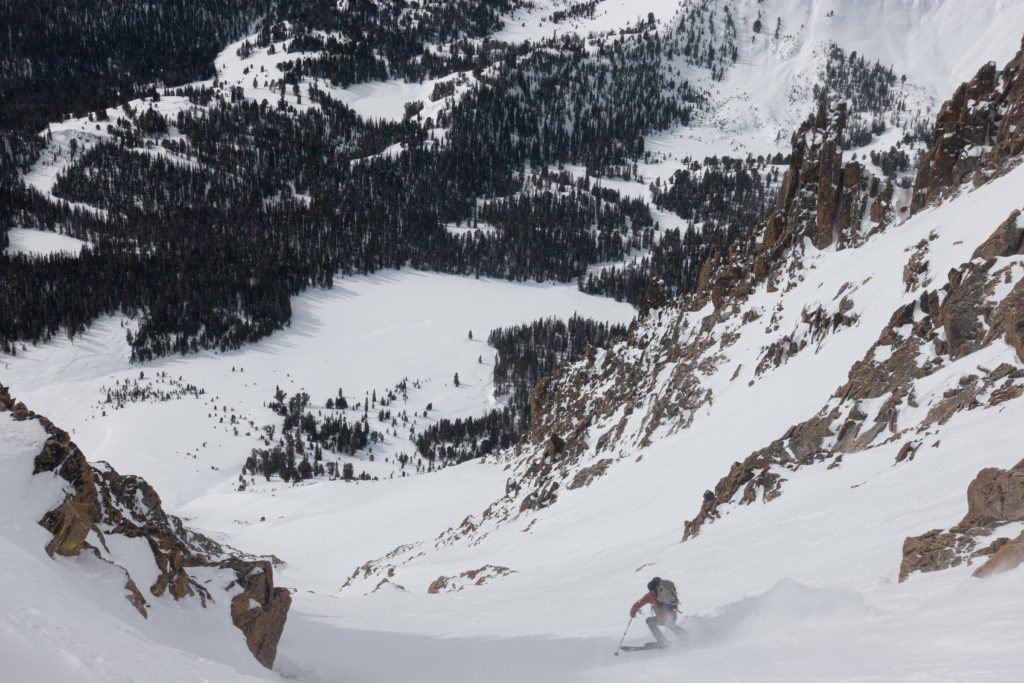
There had been fresh snowfall just a few days prior, but it was evident the wind wanted to scoop it all up and play with it instead of leaving it for us to ski. You never know until you go and now we knew, but there’s nothing to do about it besides try and make the best turns you can. Ben’s racing background shined forth as he laid aggressive edges and made quick work of the 3,000 foot line. Meanwhile, I smeared and slid trying not to fall and tear my one good ACL.
Luckily our 105mm skis floated on the breakable crust down low, enough that it wasn’t miserable and we glided out into the flats from where we had started.
Now all we had to do was retrace our steps back up to the ridge, so we skinned back up across the lake and booted to the ridge. From here I was feeling lazy and just happy to ski back down to Washington Lake and skin to camp. Ben had other desires, which we had discussed and now he wanted to implement. We had considered a ridge traverse to the north from this point that would put us on top of a cool looking chute that funnels right down to Fourth of July Lake. From here we could easily ski right back to camp. We went for it. After a half mile of rocky ridge walking we hit the summit and could see down the couloir. There was a steep rocky down climb to enter, but it was short and not as bad as it looked. The turns in the chute were variable, but that wasn’t a surprise at this point.
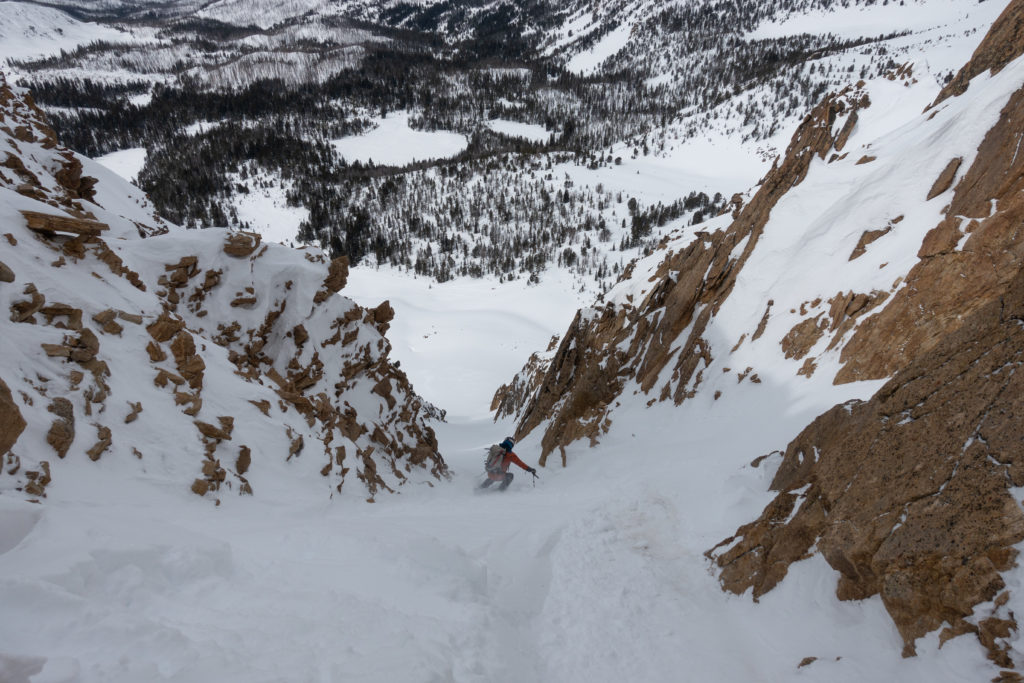
It turned out to be a super cool add-on and a great way to finish the day. We contoured around the apron and slid right into our basecamp at midday. We packed up camp and easily exited the 10 miles back to the car.
Castle Peak is one of the harder puzzles to solve due to the lack of visitors and therefore lack of knowledge on current snow and avalanche conditions. It’s not the biggest or the steepest, but the remoteness of Castle Peak makes it a special line among the list of 50 Classics and well worth the adventure.
(I just found out this fall that local Sawtooth crusher Ben VandenBos skied the peak in a day with no snowmobile from somewhere off Galena Pass Road, a MONSTER DAY!)

1 comment